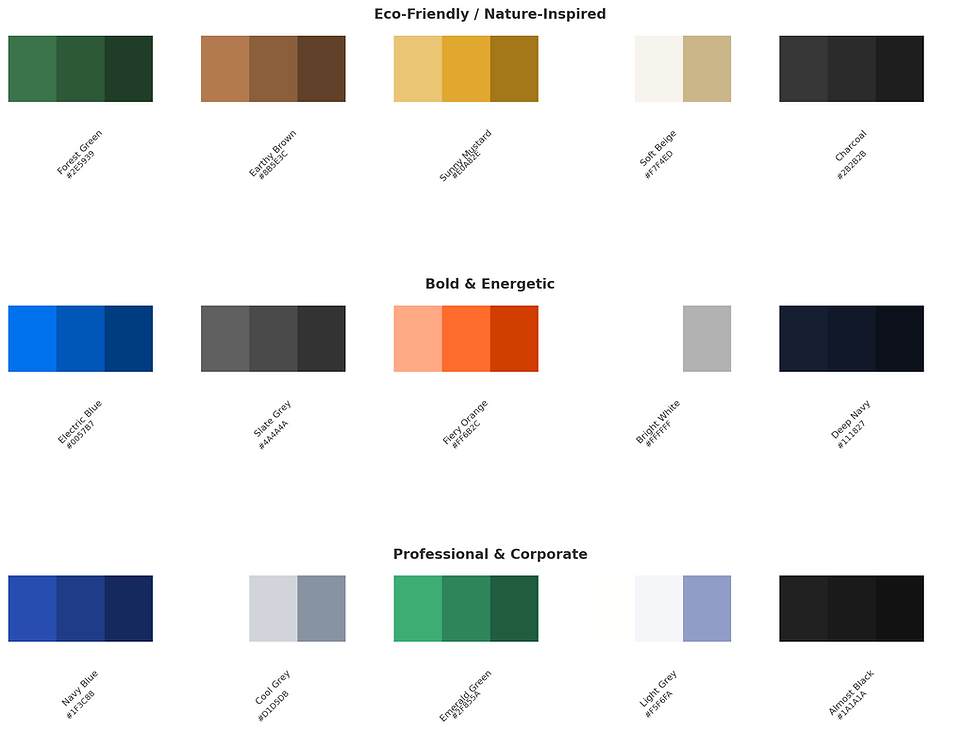How Design Shapes Effective Marketing Strategies
- Kerri Cuthbert

- Jul 9
- 4 min read
Updated: Aug 19
In today's competitive landscape, where every brand is vying for attention, the role of design in marketing strategies has never been more crucial. Design not only enhances brand visibility but also impacts customer engagement and conversions. An effective marketing strategy is grounded in the principles of design, allowing brands to communicate their values and messages more clearly.
The Importance of Design Strategies
Effective marketing strategies start with a solid understanding of design principles. The visual elements of your brand, including colors, fonts, and layouts, create an immediate impression on consumers. For instance, consider how a luxury brand uses minimalistic designs and elegant typography to convey sophistication. In contrast, a bold and vibrant design may evoke feelings of youthfulness and energy, appealing to a different demographic.
To illustrate, statista.com reports that 94 percent of first impressions are related to design. This statistic emphasizes the importance of investing in effective visual elements as part of your marketing strategy. By carefully curating your designs, you can create a strong visual identity that resonates with your target audience and sets you apart from competitors.

User Experience: A Key Element of Design
User experience (UX) is another critical aspect of effective design strategies. It refers to how users interact with your brand and its offerings. A well-designed user experience can drastically reduce churn rates while increasing customer satisfaction and loyalty.
For instance, an e-commerce website with a simple, intuitive layout makes it easier for customers to navigate and find products. When customers enjoy a seamless browsing experience, they are more likely to return. According to a study by Forrester Research, a well-designed user interface can increase conversion rates by up to 200 percent. This demonstrates how investment in user experience translates directly into business results.
When planning your marketing strategies, consider conducting user testing to gather feedback on potential designs. This hands-on approach ensures that your strategies are informed by actual user experiences, leading to higher satisfaction and profitability.

The Role of Color in Design Marketing
Color choice is one of the most powerful tools in design marketing. Research indicates that people make a subconscious judgment about a product within 90 seconds of initial viewing, and between 62 to 90 percent of that assessment is based on color alone. Therefore, understanding color psychology is key to crafting compelling marketing strategies.
Different colors evoke different emotions and responses. For example, blue often conveys trust and reliability, making it a popular choice for banks and corporate brands. In contrast, yellow evokes feelings of happiness and optimism, often used in branding for food products and entertainment.
Brands should choose colors that align with their identity and speak to their target customers. Testing varying color palettes through design prototypes can help you determine which will resonate best with your audience.

Aligning Brand Identity with Design
Effective design is vital for ensuring that your marketing strategies align with your brand identity. Your branding includes your logo, messaging, and overall visual aesthetic. A cohesive design strategy creates a unified brand experience that enhances recognition and trust among consumers.
For instance, companies like Apple and Coca-Cola have established iconic branding through consistent design across all platforms and products. This consistency builds familiarity, encouraging brand loyalty.
To create alignment among design, branding, and marketing, document your brand guidelines. Include specifications for logo usage, typography, color schemes, and tone of voice. Sharing these guidelines with your team ensures that every aspect of marketing remains consistent and true to your brand's identity.
Measuring the Effectiveness of Design Strategies
To refine and improve your marketing strategies, it is pivotal to measure the effectiveness of your design efforts. Collecting data on user engagement, conversion rates, and overall sales can offer insights into which designs resonate with your audience.
A/B testing is one effective method for measuring design efficacy. By presenting two designs to a small segment of your audience and observing their reactions, you can gather feedback and understand which design drives better engagement and conversions.
Tools like Google Analytics can help track user interactions and behaviors on your site. Assess metrics such as click-through rates and time spent on pages to ascertain how visitors are responding to your design elements.
Maximising Impact with Design Trends
Staying current with design trends is essential for maintaining relevancy in marketing strategies. Design trends can vary widely, from the use of minimalistic designs to immersive experiences utilizing augmented reality. Familiarizing yourself with these trends can enhance your branding efforts.
Incorporating current design trends into your marketing can elevate your brand's appeal. For example, interactive graphics or motion design can engage users more deeply than static images, creating a memorable experience. It’s crucial, however, to ensure that these trends align with your brand’s message and audience.
Routinely review industry blogs, design websites, and competitor strategies to see what’s trending. This can help provide fresh ideas and rejuvenate your own marketing efforts.
Conclusion: The Future of Design in Marketing
As the digital landscape continues to evolve, the connection between design and marketing strategies will only strengthen. Brands that embrace effective design principles will have a competitive edge in capturing and retaining consumer attention. As the trends change and technology evolves, marketers and designers must work hand in hand to create compelling, impactful experiences.
In summary, design shapes marketing strategies through user experience, color psychology, brand identity alignment, effectiveness measurement, and trends. By recognizing the importance of design in marketing, brands can craft strategies that resonate deeply with their target audiences, harnessing the full potential of their marketing efforts.
For more insights into the relationship of web design and marketing, check out this resource. Embrace the art of effective design in your marketing strategy, and you're bound to see positive results.








Comments